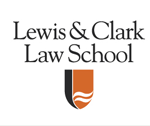Enacting Libertarian Property: Oregon’s Measure 37 and Its Implications
Document Type
Article
Publication Title
Denver University Law Review
Journal Abbreviation
Denv. U. L. Rev.
Abstract
In November 2004, for the second time in four years, Oregon voters opted for a radical initiative that is transforming development rights in the state. The full implications of this substantial change in property rights have yet to be fully realized, but it's clear that the post-2004 land use world in Oregon will be dramatically different than the previous thirty years. Land development rights in the state were significantly curtailed by a landmark law the Oregon legislature, encouraged by pioneering Governor Tom McCall, enacted in 1973. Implementation of that law survived three separate initiatives that sought to rescind it in the 1970s and 1980s. But after a hiatus of a decade-and-a-half, land planning opponents put on the ballot a scheme that promised landowners either compensation or a regulatory waiver from land use requirements imposed after they - or a family member - acquired the land in question. That 2000 measure, which the voters approved as an amendment to the Oregon Constitution, was struck down by the Oregon Supreme Court for violating the state constitutional requirement that initiatives be limited to only a single subject. Undaunted, the opponents of Oregon land use planning put another initiative on the ballot quite similar to the 2000 initiative in 2004, except that this initiative was a statutory amendment, not a constitutional amendment. Thus, it was not burdened by the concerns that led to the 2000's measure's judicial rejection. This measure, known as Measure 37, promises to transform land use regulation in Oregon and the Oregon landscape in the process. This article explains the background, politics, and implementation of Oregon's experiment in creating what is the leading example of libertarian property in the world. The article explains early judicial and attorney general interpretations of the measure and its predecessor and focuses attention on the many ambiguities in the measure's language, particularly the uncertain scope of its express exceptions from compensation. Measure 37's proponents have attempted to export its principles to other states and, in 2006, Arizona joined Oregon as another laboratory for libertarian property. Finally, the Oregon legislature recently sent to the voters a referendum, which would attempt to clarify some of Measure 37's ambiguities, expedite regulatory waivers for small developments, but impose limits on new waivers for large developments. The Oregon electorate will decide this referendum in November 2007.
First Page
279
Last Page
368
Publication Date
2007
Recommended Citation
Michael Blumm & Eric Grafe,
Enacting Libertarian Property: Oregon’s Measure 37 and Its Implications,
85
Denv. U. L. Rev.
279
(2007).
Available at:
https://lawcommons.lclark.edu/faculty_articles/31

